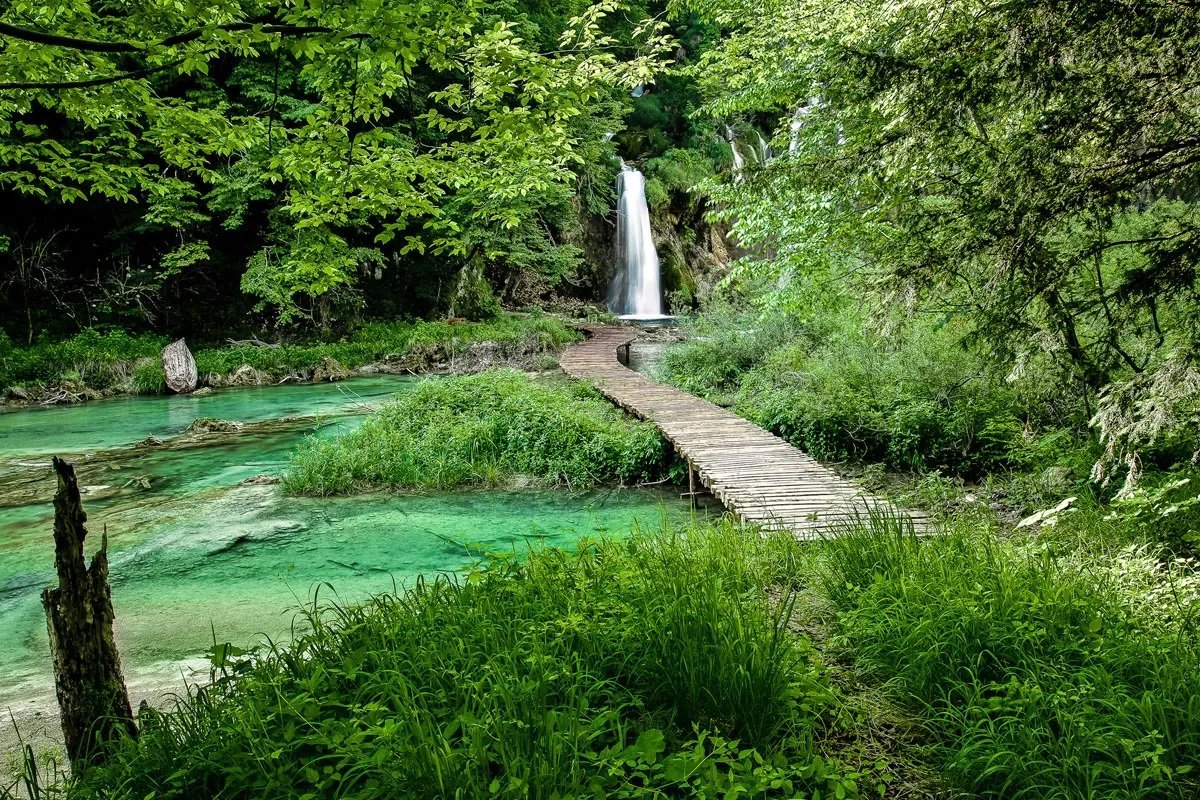
Thus reads just one of the many legends that surrounds the forming of this series of sixteen lakes that step down hill, connecting to each other by waterfalls. Plitvice Lakes really is the most unique natural sight in the country, having been formed, so an alternative and more coldly scientific theory reasons, by triffids! Well, not actually triffids if truth be told; the lakes are in fact formed by lumps of moss, but how else does one think of pleasure pool building plants?
In 1910, a student of the region wrote that the lakes are ‘… rather out of the way, remote from the lively and modern thoroughfares, out in the Croatian karst, some 9-10 hours by coach or nine–seater public omnibus, with a change of horse's at Jasenica’. Well you may not be depending on that type of horsepower to get here, but apart from that, should you trek down here in the summer then the experience is going to feel fairly similar – because Plitvice is now on the main thoroughfare from the north to the middle and southern parts of the coast, and believe us, this small road gets busy!
However, rest assured, the park is well worth the potentially nightmare journey. Let’s get the technical bit out of the way shall we? It is entirely true that the lakes are built by plants. The warm, aerated water of the streams that permeate the park are ideal to promote the growth of mosses. The mosses sit in the water and catch in their roots the dissolved limestone that the rough water sweeps down. This material is then called travertine. Over time this limestone hoard builds, new mosses jump on the top and round it all goes again. Leave to stew for a few thousand years and hey presto, you have yourself a series of lakes consisting of waters trapped by the limestone barriers that the mosses have built.
Further than this, these mosses, perfectionists that they are, are not satisfied with their creation and continue to feverishly construct new barriers. Measurements of the depth of the water taken in 1855 were 3m lower than those recorded in 1958. These glistening blue and green lakes are linked by waterfalls as the water tumbles onwards down the staircase that the barriers create, the tumult ending 135m below the point at which it started, as the waters leave the final lake in the series and plunge in one last 72m dive to join numerous cascades racing to fuse with the Korana River.
Around the lakes stands dense forest with the occasional glade – mostly the result of human engineering for the sake of livestock. Many paths lead through the park and around the lakes providing you with a superb playground to wander about in, feeling insignificant in comparison to the majesty of nature; the power of the waters; the vigour of the forest; the achievements of moss.


Comments